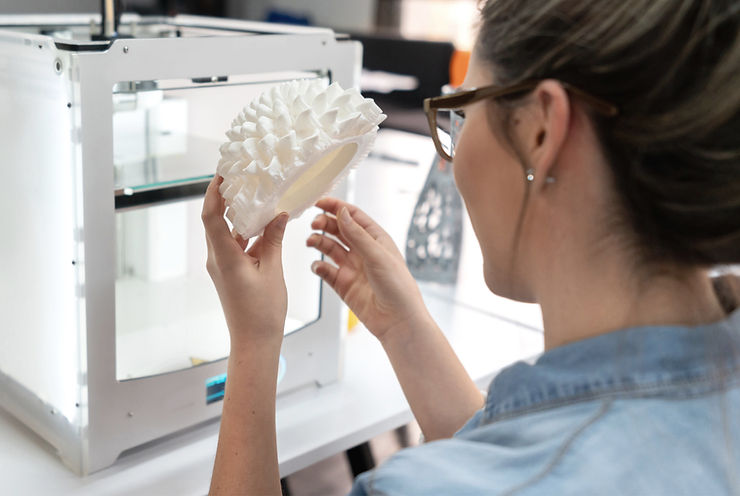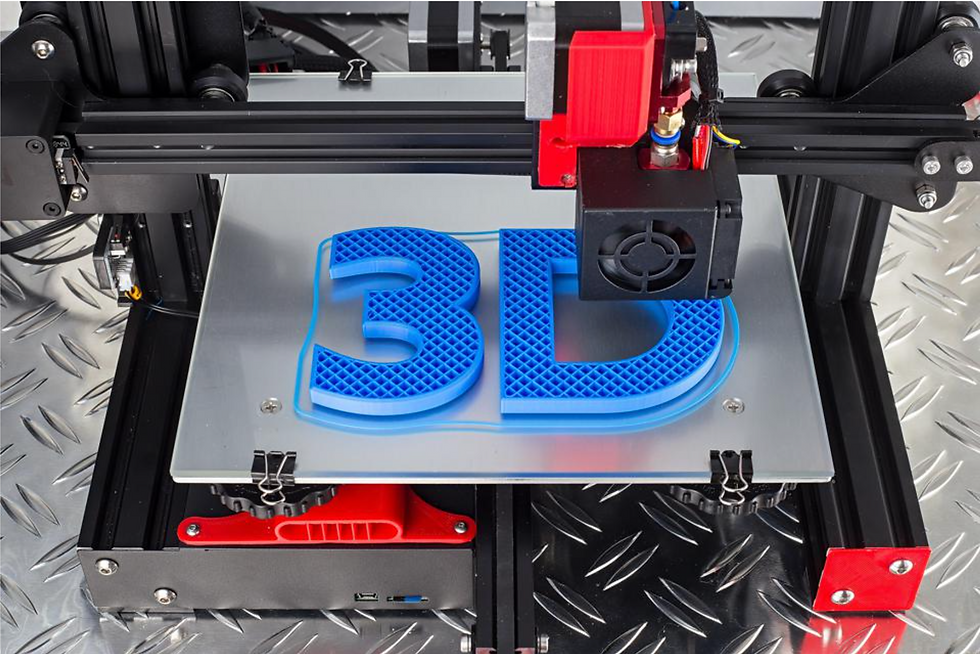How 3D Printing brings transformational change
The evolution of 3D printing has the potential to change manufacturing and logistics across multiple sectors.

Images source: Getty images
Hailed as one of the greatest innovations ever, 3D printing’s adoption is about to boom. The report "If 3D printing has changed the industries of tomorrow, how can your organization get ready today?" explains how there has been a shift of mindset among business leaders. They are no longer weighing the benefits of this new technology against traditional manufacturing. Instead, they are exploring how they can embed it into existing manufacturing processes or create entirely new ones. This has been driven by the realization that 3D printing can be invaluable for prototyping, finished products, and after-sales support. Adopting 3D printing offers benefits in multiple applications, including:
-
Product development — reduced time-to-market and shortened product development design cycles
-
Manufacturing — reduced process time via improved tools, less waste, fewer production or assembly steps, and reduced lead time via functional integration of parts
-
Engineering and maintenance — more flexible maintenance processes, lower maintenance costs, and cost-efficient industrial engineering
-
Logistics and warehousing — reduced inventory and reduced logistics handling, transportation, and related costs
-
Aftermarket — increased flexibility in the delivery of spare parts, reduced costs of spare parts production and after-market care reduced time-to-market, shortened product development design cycles
Business trends driving the wider uptake of 3D printing
For businesses, simply buying a printer is not going to unlock the full potential of 3D printing. Instead, they need to consider the reasons for adopting it and how best to integrate it. Key trends influencing these considerations are:
-
Individualization — customer co-creation: increasingly, consumers are looking for products that are tailored to their needs.
-
Democratization — innovation and development from the masses: 3D printing makes it possible for individuals or collaborative teams to manufacture end products with fewer barriers to innovation. For intracompany collaboration, design teams can “fax” their part across the world to work with tangible products.
-
Sustainability — the circular economy: 3D printing reduces transport costs when the printer is located near the manufacturing line or on remote-operating bases where critical inventory requirements are high, and there are also operating cost efficiencies when using lighter materials.
3D printing, hailed as one of the greatest innovations ever, is about to boom.

Image source: Adobe Stock
Technology trends broadening the scope of 3D printing
3D printing technology has taken huge strides in recent years, for example, with larger printers, higher-quality prints, and an expanding range of printable materials. These trends and others are constantly evolving, influencing the uptake of 3D printing and opening up possibilities for making more parts in new ways:
-
Moving beyond prototyping: 3D printing methods such as direct metal laser sintering and electron beam melting have advanced into industrial applications, including final assemblies. The issue for companies now is how to structure supply chain assets and mix old and new processes.
-
Designing lightweight objects: 3D printing techniques such as honeycombing and micro-lattice can create parts that are almost completely hollow and incredibly light, yet still strong.
-
Using fewer components for complex geometries: With 3D printing, more components can be integrated into a single object, which improves not only product functionality but quality as well. It also means greater supply chain and operations efficiencies as there are fewer production steps and less interim inventory.
-
From material management to material science: A team of researchers at Harvard University in the US has extended its micro-scale 3D printing technology to a fourth dimension: time (i.e., 4D printing).1 The printed particles form different structures based on a reaction to environmental stimuli. This is the ultimate agile supply chain, as programmable material can morph into what is required when it is required.
Key segments of the 3D printing market
Suppliers of 3D printing fit into six basic categories:
-
Major industrial companies: Some big industrial players have opened 3D printing facilities to bring design skills and materials science together, or they have purchased specialist startups. Some players are starting to monetize their IP by providing services to other companies.
-
Specialized 3D printing vendors: 3D printer companies are drawing on new additive layer manufacturing technologies.
-
3D printing service bureaus: Some 3D printer manufacturers also provide after-sales service and consulting.
-
Marketplace providers: Marketplaces are online intermediaries between 3D printer owners and users who want to manufacture objects. It enables, for example, a file to be linked to a printer in any of potentially thousands of locations.
-
Software vendors: One key differentiator for companies to consider is an open-source platform for crowdsourcing ideas and providing completed blueprints for spare parts. This not only creates brand loyalty but also guarantees the legitimacy of a file in a sea of reverse-engineered copies.
-
Professional services providers: In an inventory of thousands, choosing which components may be best suited to 3D printing requires a diagnosis and methodology. Professional service providers can help manage the end-to-end process of 3D printing and can accompany organizations on their journey to adoption. These providers can bring together different consulting competencies, including strategy; supply chain; design and engineering; product development; IT; and analytics, as well as tax and legal services. They can also help identify the right vendors for a 3D printing route.
What’s next for 3D printing?
The aerospace and defense sector has, to date, made the most use of 3D printing, and there is still huge potential to be unlocked. However, other sectors are close behind. In health care, 3D printers have converted a manual, labor-intensive industry into an automated one. The food industry is exploring printed products from intricate chocolate designs to vegetable-based baby food. In resource industries, where operators are often located in challenging locations, such as the open ocean, transportation and logistics costs of supplying spare parts can be greatly reduced. In the automotive sector, lightweight components can be produced faster, reducing vehicle weight and improving performance and fuel economy as well as increasing manufacturing speed. In retail, 3D printing can be used to modify existing products and personalize the fit of items at the point of sale. The materials, technology, applications, and availability of 3D printing are all contributing to its attractiveness. Businesses need to ask themselves how 3D printing could revolutionize their activities before it disrupts them from the outside.




